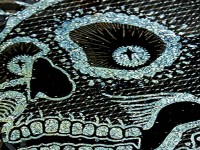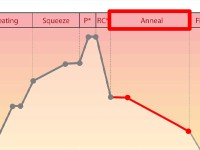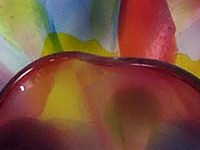Irid-on-Irid Fusing
Layering iridized glass can be tricky because iridized surfaces will not fuse to each other. With a little clever sandblasting, though, you can create some spectacular designs! For this tutorial, you'll need iridized glass, some masking materials, and a sandblaster. »



